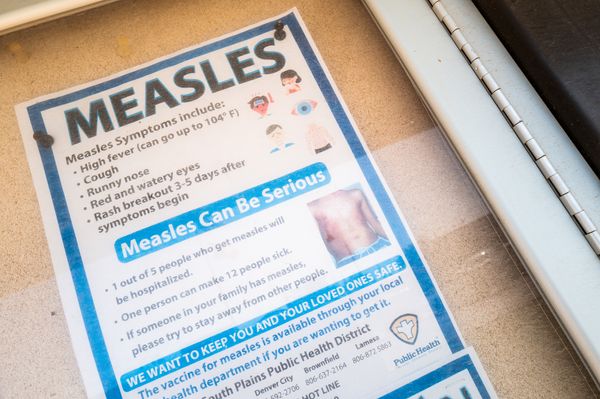
South-east Asia was shaken by a strong 7.7-magnitude earthquake on Friday, which caused a high-rise building in Bangkok to fall and raised concerns that hundreds of people may have died in neighbouring Myanmar.
According to preliminary reports, the first noon tremor was a shallow 10km (6.2 miles), with an epicentre in Myanmar, according to the US Geological Survey (USGS) and Germany's GFZ centre for geosciences.
Twelve minutes later, a second earthquake with a magnitude of 6.4 rocked the region. According to the USGS, the tragedy "is likely widespread" and hundreds of people may have died in Myanmar.
7.7 magnitude earthquake hits Southeast Asia, mainly impacting Myanmar and Thailand.
— Pop Base (@PopBase) March 28, 2025
pic.twitter.com/hIEgS2w712
Since a military junta took over in a coup in 2021, Myanmar has been experiencing political unrest and it is challenging to obtain information on the ground.
What are the biggest earthquakes in history?
6. Myanmar 2025: Magnitude 7.7
A strong 7.7 magnitude earthquake has hit central Myanmar on March 28, 2025.
The exact number of deaths and missing people are not yet known, but a rescue team has told the BBC it is “at least in the hundreds.”
After an incomplete high-rise structure collapsed hundreds of miles away in Bangkok, 70 construction workers are missing.
In Naypyidaw, the capital of Myanmar, there have been reports of roads buckling, and there have been powerful earthquakes detected in other parts of Thailand and south-west China.
5. Russia 1952: Magnitude 9.0
A magnitude 9.0 earthquake hit Severo-Kurilsk on the Kamchatka Peninsula in east Russia on November 4, 1952. It generated a local tsunami with waves of up to 50 feet and killed an estimated 10,000 to 15,000 people.
While many people reached higher ground, some returned to the town before the second of the three tsunami waves hit. Some 39 per cent of Severo-Kurilsk’s population died, according to the Western States Seismic Policy Council.
The waves also travelled across the Pacific in all directions and were felt in New Zealand and Peru. They also caused significant damage in Hawaii.
4. Japan 2011: Magnitude 9.0
Japan’s biggest earthquake hit the country on March 11, 2011.
The underwater quake hit around 80 miles off the coast of Honshu, Japan’s biggest island. Hundreds of aftershocks followed in the ensuing weeks — many of which were magnitude 6.0 and stronger.

It also caused a series of tsunamis, with the biggest waves hitting Tohoku, a region in north Japan, where 33-foot-high waves hit the city of Sendai.
The tsunami caused a major incident at the Fukushima nuclear plant, as the waves destroyed a power grid and vital coolers. All three core reactors then melted within three days and radiation began leaking.
About 18,000 people were listed as dead or missing in Japan following the quake and tsunami.
The waves also reached locations on the other side of the Atlantic, hitting Hawaii, and the coasts of California and Oregon.
3. Indian Ocean 2004: Magnitude 9.1
Twenty years ago, an undersea earthquake off the coast of Sumatra, Indonesia, caused widespread devastation in multiple countries. It was the worst tsunami disaster in history.

The Boxing Day earthquake struck at 7.59am local time and, during the day, multiple devastating waves hit locations across Indonesia, Thailand, India, Sri Lanka, the Maldives and even faraway east Africa.
More than 230,000 people died in 15 countries and thousands of communities suffered long-term damage. Tourist hotspots, farming areas and entire towns were destroyed.
2. Alaska, USA, 1964: Magnitude 9.2
On March 27, 1964, the United States faced its most powerful earthquake since records began.
Known as the Good Friday earthquake, it affected almost all of Alaska and caused the earth to shake for four minutes before 27ft waves hit some areas along America’s west coast.
A total of 128 people died — including 16 who were further away from the epicentre in California — and the cost of the damage totalled $895 million (£704m).
1. Chile 1960: Magnitude 9.4 to 9.6
Initially thought to be a magnitude 9.5, an earthquake 100 miles off the city of Valdivia on the coast of Chile is the strongest to have been recorded.
It took place shortly before new technologies made the recording of seismic activity more accurate. Scientists have debated its estimated strength; some have said it was likely to have been slightly stronger than 9.5, while others said the opposite.
The quake caused huge damage to several cities, but the ensuing tsunami wreaked even more havoc. Waves of up to 80ft high hit the Chilean coastline and the destruction left two million people homeless. About 1,655 people were estimated to have died.







